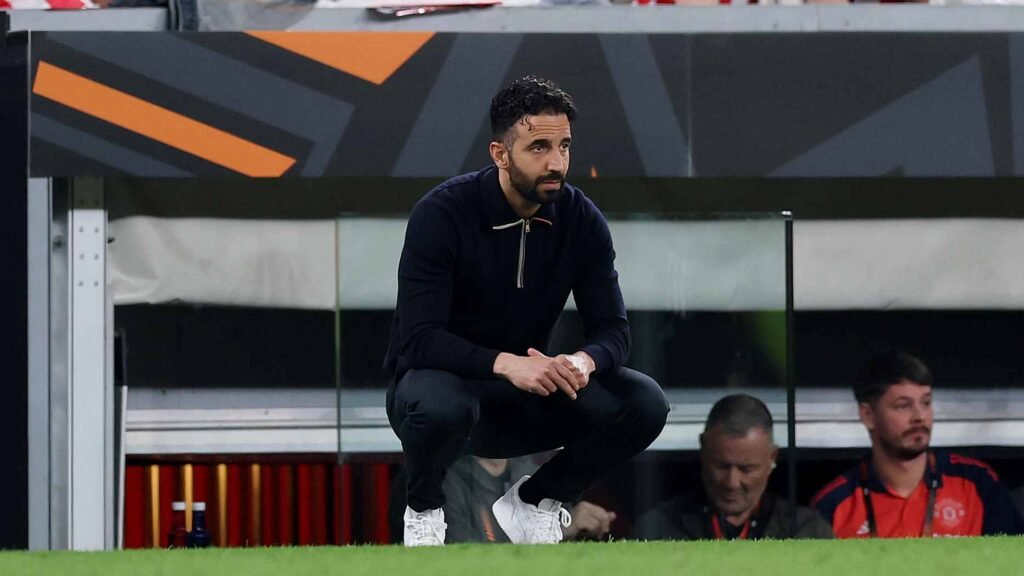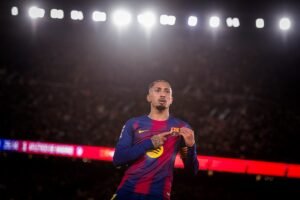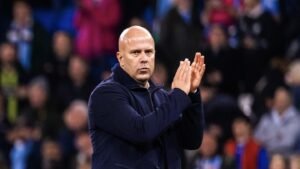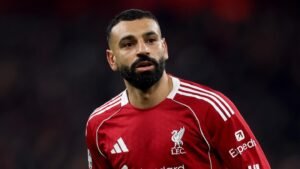The 20-time Premier League champions can reverse their trend of stultifying non-football, but recruitment is key
By the time Sir Alex Ferguson walked away from the Manchester United dugout in 2013, he had left behind a club to whom winning felt like a virus. They were infected by it.
What has followed, however, is more than a decade in which the club’s identity has continued to sink, like a modern-day Titanic after an encounter with an iceberg, a long painful descent into the chilly waters in progress as some escape on a lifeboat here and there.
Nowhere are United’s failings more glaring than on the pitch with the baffling non-football, but records of their transfer dealings are a close second. The club have blown over £1bn on players only to end up with a jagged mismatch, square pegs in round holes.
David Moyes’s signing of Marouane Fellaini late on deadline day in 2013 after the club had missed out on key midfield targets was a symbol of the comical recruitment that would colour the Red Devils’ decade in a transfer hell.
The Belgian was not a player at the level of the 20-time Premier League champions. But for every Fellaini there was an Angel Di Maria, a Zlatan Ibrahimovic, a Radamel Falcao, all players who were world class and possessed the skillset to play for any top club in the world. But the problem was they were either misfits or has beens.
Di Maria was not a player suited to Louis van Gaal’s style of football; he later called the Dutch manager the worst coach he had ever had. Ibrahimovic and Falcao were past their prime when they arrived, hauled in as panic buys. Alexis Sanchez’s best performance for United was on a piano. The Chilean’s powers were fast fading in his last season for Arsenal and United’s recruitment department should have been competent enough to see that. For instance, he arrived at Old Trafford as the most dispossessed man in the Premier League.
Sanchez’s £500,000-a-week wage would also turn out to be a symbol of the club’s bloated wage structure.

Behind each of United’s transfers has often been a new manager, a new philosophy, and a reset button that keeps getting pushed. The club have seemed unable to spot talent and often resorted to buying the used players of other clubs to fill key positions in the squad. Bastian Schweinsteiger, Nemanja Matic, and even Casemiro are on this list alongside Ibrahimovic and Falcao. Each was signed for a crucial midfield position or as the main No 9, not as backups.
This changed somewhat with Ole Gunnar Solskjaer pushing for youth and talent. It was under the Norwegian that United finally had a discernible transfer strategy for the first time post-Ferguson. Solksjaer majorly targeted a counter-attacking side with a core of British talent, bringing in the likes of Daniel James, Aaron Wan-Bissaka, Harry Maguire, and Jadon Sancho. Marcus Rashford and Mason Greenwood also became important homegrown figures in the side. Of course there was the signing of Portuguese Bruno Fernandes, who is undoubtedly the club’s best signing in this era.
But Solksjaer’s side was more a hit-and-run team than an actual strong side that could compete for an extended period. For years, the Norwegian either refused to or just could not bring in talented central midfielders to build a side that could control possession and play on the front foot. The McFred combination (Fred and Scott McTominay) famously became the symbol of his tenure. The two were hardworking but not assertive players who could control the tempo of games and dictate play with passing.
It is still baffling why United failed to make this kind of signing when the squad was desperately crying out for it. Erik ten Hag, when he came along, brought in Casemiro and Christian Eriksen. But both were 30 years old and the latter was playing with an Implantable Cardioverter Defibrillator. Ten Hag’s best period at United, and possibly that of the club post-Ferguson, was undoubtedly in his first season when both players lined up with Bruno Fernandes in a midfield three, Casemiro shielding the defence, Fernandes creating chances in the attacking third, and Eriksen linking both players together.
But United played 62 matches that season and it was always going to be a tall order to ask the 30-year-olds, turning 31, to maintain that level of performance with the congested fixture schedule and intensity of the Premier League. Ten Hag’s side racked up an impressive 41 wins out of those 62 games, losing 12 and drawing nine, but near the end of the season came the 7-0 mauling at Anfield and they never recovered.
Ten Hag was ultimately sacked and replaced by Ruben Amorim, and the squad reset button was pushed once more. But what must United get right now?

First of all, United’s new co-owners, Sir Jim Ratcliffe’s INEOS group, have shown this summer that they are eager to sign Premier League-proven players to erase the need for adaptation to English football. Which is the problem the club have faced with a number of signings, most recently Joshua Zirkzee and Rasmus Hojlund.
They have also shown that they want to work with Amorim’s defined footballing identity. There is the question, of course, of whether that identity is not just that of the current manager rather than the club. But then again, most clubs ultimately invest in the vision of their chosen coach. Manchester City’s investment in a ball-playing goalkeeper and technical midfielders came from Pep Guardiola’s vision.
The far more important thing is that the club must fill core positions with talented players who have the right mentality. If the manager wants a player, that player must be vetted by the recruitment department to be sure he has the right qualities to succeed at the club. United must also manage their wage bill carefully, having paid unproven players far too much and ended up with footballers who are not good enough but cannot be moved on due to excessive wages.
Additionally, the signing of technical central midfielders is non-negotiable. This is just a position the club have disregarded for too long. For example, United have been on the market for forwards this summer but are yet to be seriously linked with any midfielder. While the club’s goalscoring last season was abysmal and attackers were clearly, even desperately, needed, those players will ultimately be under too much pressure and fail to perform if the creative core is lacking. The midfield is the lifeblood of any team.
A comparison of United to any other ‘big club’ in the Premier League shows the stark difference. Liverpool had the midfield trio of Ryan Gravenberch, Alexis Mac Allister and Dominik Szoboszlai last season, but have already reinforced that position this summer with the signing of Florian Wirtz. Arsenal had Declan Rice, Martin Odegaard and Thomas Partey last season. Partey has left but the club are set to bring in Martin Zubimendi, having already signed Christian Norgaard as a second-choice midfielder. At United, Norgaard would have been a first-choice signing.
Chelsea have Enzo Fernandez, Moises Caicedo and Romeo Lavia. Manchester City have Rodri, Bernardo Silva, Mateo Kovacic, Ilkay Gundogan and youngster Nico O’Reilly, and while Kevin De Bruyne has departed, they have brought in Nico Gonzalez and Tijjani Reijnders this year. Phil Foden is also an excellent player in midfield, making eight options at the centre of the park. Newcastle have the brilliant Sandro Tonali, Bruno Guimaraes, and Joelington. Manchester United’s glaring lack of investment in this area of the squad smacks of unacceptable neglect.
The northwest club dominated the first 21 years of the Premier League playing a brand of exciting football that might as well have come with a government health warning for heart-stopping action. Twelve years on from Ferguson’s farewell, the Red Devils have completed a jarring rebranding to serve up stultifying non-football. They can repair the Titanic, but recruitment is key.




